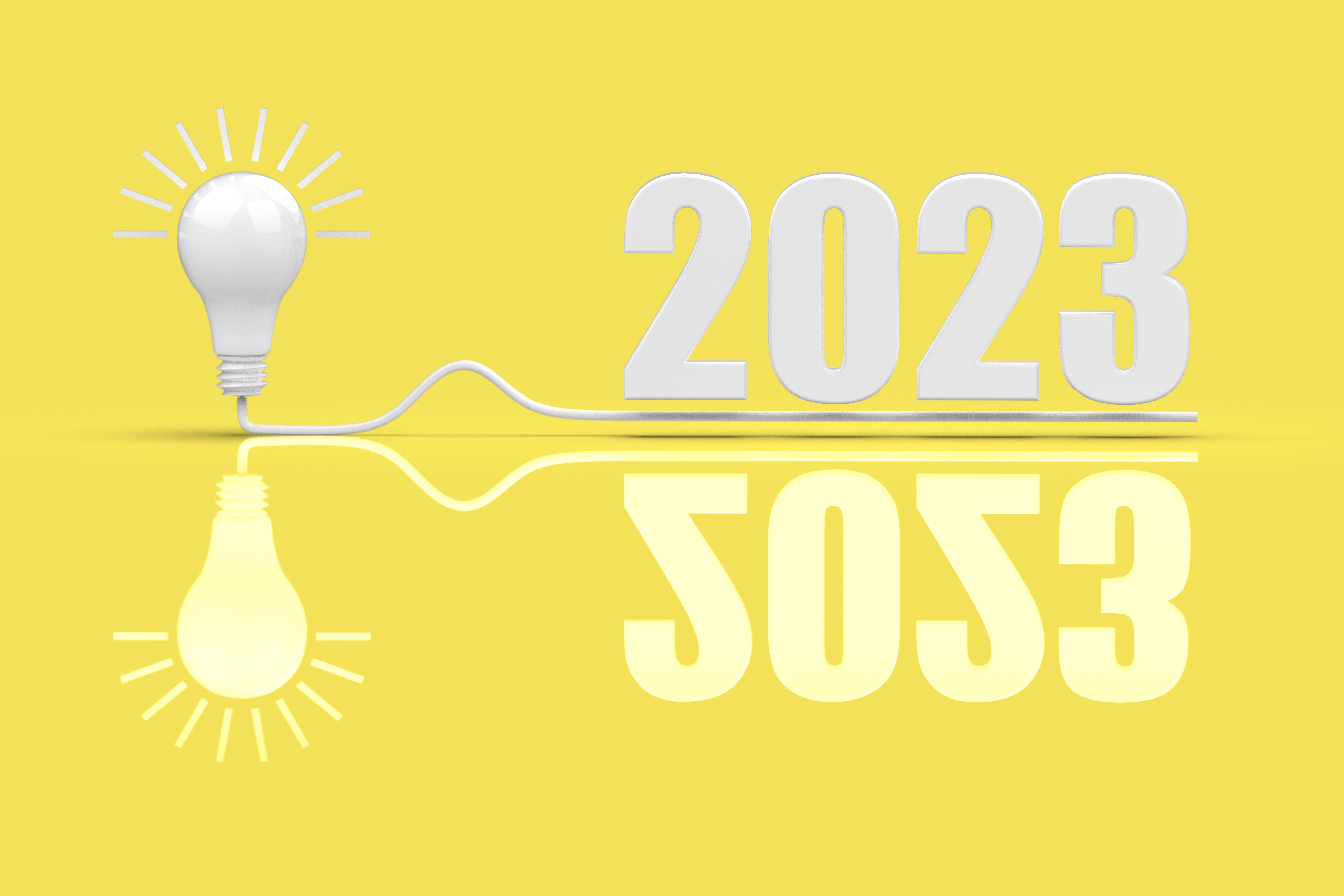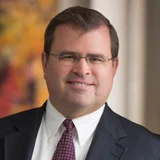 Litigation finance trends, Supreme Court decisions on patent enablement and copyright fair use, the launch of the Unified Patent Court, more cases dealing with the intersection of IP law and AI— and continued uncertainty. These are some of the key issues to watch in 2023, according to the readers below. As we do each December, IPWatchdog asked its IP community what they will be paying attention to as we enter the new year; hopefully their responses will help prepare you for what’s ahead.
Litigation finance trends, Supreme Court decisions on patent enablement and copyright fair use, the launch of the Unified Patent Court, more cases dealing with the intersection of IP law and AI— and continued uncertainty. These are some of the key issues to watch in 2023, according to the readers below. As we do each December, IPWatchdog asked its IP community what they will be paying attention to as we enter the new year; hopefully their responses will help prepare you for what’s ahead.
Alden Abbott
Former FTC General Counsel; Senior Research Fellow
Mercatus Center at George Mason University
I am cautiously optimistic that Congress will not enact harmful anti-patent legislation, in light of the new bipartisan strong patent coalition led by former Federal Circuit Chief Judge Paul Michel and former PTO Directors Andrew Iancu and David Kappos (among others). I am hopeful that the Supreme Court will not “muck up” enablement law (by imposing an excessive burden on inventors) in deciding the Amgen v. Sanofi case.

 Timothy J. Carroll (far left) and Manny J. Caixeiro
Timothy J. Carroll (far left) and Manny J. Caixeiro
Partners
Venable
Risks stemming from patent litigation are surging. Between 2019 and 2021, patent litigations increased from 3,576 to 4,063. Patent litigations against streaming service companies increased exponentially, however, by nearly 900% from 2008 to 2017. Since 2017, on average, 167 new cases per year were brought against streaming services.
This trend is largely attributable to an influx of litigation funding. Private investment firms facing a bear market now invest billions to capitalize on a high ROI achievable through patent litigation. Streaming services are prime targets because subscriber bases have markedly grown partly because of the pandemic. Moreover, there are many inexpensive patents that funders have acquired and asserted. For decades, inventors obtained streaming-related patents; most of their companies failed, leaving patents to be acquired by funded non-practicing entities.
Your company should thus take steps to mitigate patent litigation risks. First, streaming services should collect industry prior art. Second, they should seek to partner with other streaming providers against industry-wide litigation campaigns. Third, streaming providers should analyze indemnification agreements to assess when another party bears responsibility for predictable patent litigation. Fourth, in-house counsel should account for the likelihood of patent disputes in their 2023 budgets. Streaming service patent litigation is here for the foreseeable future, but prepared companies can weather the storm.
Trevor Cook
Of Counsel
Bird & Bird
In 2023 all eyes will be on the opening of the Unified Patent Court. The new court will have jurisdiction, for the majority of EU member states, over traditional European patents in so far as they designate those states and also over the new European patent with unitary effect, which the European Patent Office has said it will start to grant on January 1, 2023. Proprietors of traditional European patents will, however, be able to opt them out of the new system, so there will be interest initially not only in the take up of the new unitary patent but also on the extent to which proprietors are opting traditional European patents out of the system. People will then be watching carefully the progress of the first cases before the new court – who is bringing the proceedings, and in which division of the court, how is the court handling them, and whether there are any differences between different divisions in how they do so, for example in whether or not they will consider counterclaims for revocation at the same time as determining infringement, as the rules permit of either course.
Lawrence K. DeMeo
Counsel
Hunton Andrews Kurth LLP
I anticipate that litigation and legislation will inform how our IP system handles “disruptive” technologies like artificial intelligence (AI) and blockchain.
For AI, decisions by the USPTO and USCO make clear that only a human may be an inventor and that some degree of human involvement is required to obtain copyright protection. But it is unclear what role AI can play in a human’s creative process. In 2023, I expect to see examples of human use of AI in the creative process challenged before the USPTO and USCO, and potentially in litigation.
Blockchain technology and its inherent anonymity and decentralization has also raised questions regarding IP rights. For example, with respect to nonfungible tokens (NFTs), it’s not yet clear: (1) who has the right to mint an NFT that may contain a third party’s IP; (2) what rights transfer with an NFT sale; (3) whether and to what extent IP rights are enforceable and exploitable in the metaverse; and (4) if they are, where and how an aggrieved party should go to enforce those rights. In 2023, I anticipate that litigation and a new study by the USPTO and USCO may clarify these issues and provide guidance regarding IP protection.
And rew Gray
rew Gray
Partner
Morgan Lewis
The public emergence of applications that use artificial intelligence (AI) engines to create new inventions and new works of authorship and art has created the hottest topic in IP in 2022 as the question has become: Who owns the intellectual property rights that exist in these new creations? In the years to come, we will learn whether those rights belong to the person who created the AI engine, the person who trained the AI engine, the person who tasked the AI engine with making the creation, the AI itself, or perhaps no one. While the first decisions coming out of the courts suggest that only persons may own intellectual property rights, how those rights are divvied up among the various persons involved remains to be determined. And, the answer to these questions will, of course, impact the future of AI development, investments in AI and in creating intellectual property rights, and the types of inventions, texts, and art that will be created.
 Blair Jacobs
Blair Jacobs
Principal
McKool Smith
I expect that 2023 will lead to more of what we have seen over the past few years – uncertainty trends and less predictability for our clients who desire predictability more than anything. The system has failed, unfortunately, to provide the level of predictability and certainty that the patent world deserves. Most commentators do not believe that legislative action will lead to a result that promotes innovation and a strong patent system that is able to meet or defeat increasing challenges from China and other countries that are increasingly active in the U.S. patent system.
Until recently, SEP licensing disputes focused on consumer electronic devices. That will likely change in certain ways. As IoT and 5G continue to incorporate standard-essential communications technologies into numerous standardized technologies, many other industries will likely proliferate the marketplace.
And despite optimism that 2021 would provide some certainty on the topic, the current state of 35 U.S.C. § 101 jurisprudence relating to patent subject matter eligibility remains rife with uncertainty. The Supreme Court should address the issue of eligibility and provide clarity but I simply cannot predict that this will happen, as this Court has shown a reluctance to address this incredibly important issue.
Litigation funding of solid patent cases will increase in 2023, that is a certainty. There is capital out there that needs to be deployed and notwithstanding the oppositional regulatory activities of big Tech, there are good cases out there that will force big Tech to deal with intentional infringement.
Finally, the ITC will remain a critically important place to seek exclusion orders, with caveats. A complainant really needs to thread the needle these days at the ITC, with issues such as domestic industry and public interest considerations looming as critical considerations that can doom any ITC Complaint.

Efrat Kasznik
President
Foresight Valuation Group
Looking ahead, new developments in IP activity will be driven by geography and technology. From a location perspective, all eyes are on Europe this coming year as the Unified Patent Court (UPC) is finally about to launch (after being postponed to June 2023). With China experiencing economic turmoil, Europe has taken over in terms of patent court developments to watch. From a technology standpoint, it is my prediction that 2023 will be the year AI really makes a big splash into mainstream, bringing with it all the hotly debated IP issues over ownership and inventorship. With billions of dollars behind initiative such as the OpenAI (heavily funded by Elon Musk and others), which recently launched ChatGPT, new AI-based products are about to hit the market in many mainstream applications. While this represents great opportunities, the IP challenges are expected to ramp up both on the patent-eligibility as well as the data ownership front, which may take years to sort out.
Steve Kunin
Partner
Maier & Maier
I am hopeful that the recent patent reform efforts spearheaded by Senators Tillis and Coons will take hold and provide a legislative remedy to the challenges faced by the innovation community in the life sciences and software fields in overcoming the uncertainty presented by the current state of the law on patent subject matter eligibility. Recent efforts in getting the Supreme Court to revisit this area of the law have been unsuccessful. With the Federal Circuit choosing not to give deference to the USPTO’s efforts to provide clarity though its Patent Examination Guidelines it appears that it may be left to Congress to find a legislative solution.
Mark Lezama
Partner
Knobbe Martens
We have already seen Director Vidal express a different outlook on PTAB trials and demonstrate a different way of engaging compared to her predecessors. We can expect more from Director Vidal in 2023, perhaps including new guidance for director review. In FY2022, institution rates on PTAB petitions were the highest they’ve been in the last five years. We can expect institution rates to remain high and perhaps even increase.
We may also see the Western District of Texas’s share of new patent cases drop. Fintiv denials have been declining and are now even less likely given the interim guidance in June. And now patent plaintiffs are no longer guaranteed to draw Judge Albright simply by filing in the Waco Division because cases filed there will be randomly assigned to judges across the Western District.
It will also be interesting to see whether more judges adopt disclosure requirements like those that Chief Judge Connolly of the District of Delaware imposed in standing orders this year. Those disclosure requirements have already led the judge to uncover a set of facts in connection with patent-assertion entities and their attorneys that the judge found troubling. If Judge Connolly’s investigation into compliance with his disclosure requirements reveals widespread abuses, it would not surprise me to see more courts adopting similar disclosure requirements.
Daryl Lim
H. Laddie Montague Jr. Chair in Law at Penn State Dickinson Law and co-hire, Institute for Computational and Data Sciences
Penn State University
AI will continue to feature prominently. Tribunals have settled questions of inventorship and authorship. IP will remain a human-centric regime for now. The next phase of litigation will focus on questions of infringement, fair use, and damages.
Matthew Butterick’s class action lawsuit against Microsoft, GitHub, OpenAI, and other companies involved in designing Copilot opens the next salvo. Software developers, artists, writers, and privacy activists have complained tech companies training AI systems use data that does not belong to them and do not provide compensation. As UK law firm Bristows noted, the suit will likely involve the following: 1) Have the defendants infringed copyright in software GitHub hosted? 2) Do the license terms included with the code hosted in GitHub prevent the defendants’ use of the code? 3) Do GitHub’s Terms of Service entitle it to use the GitHub code as it has done?
The Supreme Court’s decision on Artist Andy Warhol’s use of Lynn Goldsmith’s Prince photograph may well influence the contours of when training and output of an AI model are infringing in Butternick’s case. Moreover, its views on the extraterritorial reach of trademark rights may also affect how courts construe damages in AI cases. Watch this space.
Michelle Mancino M arsh
arsh
Partner
ArentFox Schiff
The outcome of Andy Warhol Foundation for the Visual Arts, Inc. v. Goldsmith pending before the Supreme Court could (pun intended) transform US copyright law no matter the outcome. The case will decide if Andy Warhol’s iconic treatment of Lynn Goldsmith’s original photograph of the musician Prince, without authorization from Ms. Goldsmith, constitutes a fair use of her work or an infringement. The Court must answer whether a work of art is transformative under the fair use doctrine, if and when it conveys a different meaning from the original work. The case pits photographers (artists) whose very livelihoods depend on licensing revenue against other artists, who seek to use and alter those photographs to create a wholly new work. The fair use doctrine is in much need of clarity but can the Supreme Court provide a bright line rule or will they muddy the waters further? Moreover, with the rise of artificial intelligence mimicking real artists, use of unlicensed third-party photographs may soar if the Court attempts to define some measurable level of transformation. My prediction is the decision will raise more questions than it answers and could be a significant setback for artists – no matter the medium.
 Scott McKeown
Scott McKeown
Partner, Chair PTAB Group
Ropes & Gray
With some movement on Section 101 legislation (Tillis proposal), it seems that some in Congress have a renewed interest in working with stakeholders on addressing what is undoubtedly patent law’s biggest hairball. With Senate Judiciary Committee, IP Sub-committee lead Leahy retiring, this will allow for Senator Coons perhaps to step in his shoes. With Both Senators Tillis and Coons closely aligned with Bio/Pharma interests, there would seem to be an appetite to move a bill on 101 forward. (Hopefully, the passage of time has lessened the sting of the last, failed legislative effort by the same two senators). It is unlikely to happen quickly given the wrench throwers on the Beltway sidelines, but it may at least be the beginning, of a beginning. Fingers crossed.
Eugene Perez
Partner
Birch, Stewart, Kolasch & Birch, LLP (BSKB)
Last November 2022, SCOTUS granted a rare certiorari in Amgen v. Sanofi. I hope there is a simple answer to the question on the enablement requirement.
The Supreme Court has not liked rigid rules imposed by the Federal Circuit (e.g., just look at the complete bar of the Doctrine of Equivalents in the Festo cases), and may view the required “full scope of claimed embodiments without undue experimentation” as being rigid. However, complex technology can lead to court decisions that can significantly impact patent prosecution and litigation. Just take a look at the Section 101 decisions in Mayo Collaborative Servs. v. Prometheus Lab., Inc., 132 S. Ct. 1289 (2012) and Ass’n for Molecular Pathology v. Myriad Genetics, 569 U.S. 576 (2013), where the Court’s decisions seemingly intertwined a prior art analysis or what can be conventional in the art to assess eligible subject matter. You can no longer claim, what was well understood at the time, “isolated or purified” antibodies.
Antibody therapeutics are a multibillion industry, and such patents are very valuable, especially in areas like cancer diagnosis and treatment. Just ask any major pharmaceutical company how much research and investment are made on these patents.
I hope that the Supreme Court will simply reverse the “full scope” requirement, not just to keep it simple and to save the antibody industry, but to avoid creating an enablement standard that will complicate patent prosecution and increase litigation for years to come.
Karthika Perumal
Partner
Womble Bond Dickinson
I am most interested on how the Supreme Court will come down on the standard for enablement for functionally defined genus claims in the Amgen v. Sanofi case. Attacks on patents based on 35 U.S.C. §112 have increased dramatically in recent years and Federal Circuit decisions have not provided clarity on the controlling standards. We expect this trend to continue beyond the patents in the chemicals and biotechnology industry to patents in the high tech space.
Mark Re mus
mus
Partner
Crowell & Moring.
Courts and patent offices will continue to wrestle with the role of artificial intelligence (AI) in the patent system. AI has been deployed across multiple industries to drive innovation, including industries as diverse as drug discovery, autonomous vehicles, and financial technology. With this new technology comes new challenges, and the patent system has struggled to keep up. Inventorship will be a focus in 2023. While courts in the U.S. and UK do not currently allow AI to be named an inventor, other countries, including Australia and South Africa, have allowed patents to name an AI system as an inventor. There will be attempts to harmonize these conflicting positions in 2023. AI will also test the boundaries of what it means to be “obvious.” Obviousness is evaluated from the perspective of a person of ordinary skill in the art (POSA), but what happens when that “person” is AI? Should a patent be allowed to issue if an innovation is non-obvious to a person, but obvious to an AI system? The patentability of innovations that result from AI will be at risk if AI becomes the standard for a POSA and courts will grapple with that issue in 2023.
Marcela Rob ledo
ledo
Partner
Cleary Gottlieb Steen & Hamilton,
I will expect more interest to come regarding how intellectual property is a part of digital assets, particularly around NFTs. Although it seems like the NFT buyout craze has died down for now, companies will be hard-pressed to ignore them and the possibility to exploit their IP via NFTs. In particular, there will be a continued push to use trademarks in new forms of digital content, and I expect that, as companies get more comfortable with digital assets, trademark licensing for use in NFTs will increase.
And as new metaverses prop up, companies will not want to miss out on those – it might be a company that has very strong trademarks licensing digital branded assets, a software company developing software that powers these metaverses or another buying digital real estate – there will still be plenty of IP licensing and use in the coming year.
Also, artificial intelligence will likely continue its upward trend, and the intellectual property issues around AI will continue to pop up, including whether there is IP authorship in machine-created work, whether algorithms can be patented and the type of IP protection that can be afforded to machine learning code and models.
Josh Sc hiller
hiller
Partner
Boies Schiller Flexner LLP
The Supreme Court’s upcoming decision in the Warhol case will be the first time since Campbell that the Court will consider the fair use test in the context of two original works in the same medium and whether the second work, in using elements of the first, has made sufficiently transformative use of that first work. The Warhol decision threatens to differ from Campbell’s analysis in order to reach an opposite result, and finding that Warhol’s work, as licensed in a magazine, is not fair use. A decision against Warhol could potentially result in an outcome where a work is considered fair use at first, but subsequent licensing uses somehow make the work incapable of passing the test.
Under Campbell, there is no distinction: a work of art is either fair use or it isn’t regardless of how a single specific instance of it is used (e.g., displayed in a gallery, reproduced on the cover of a magazine, etc). Because the Warhol case has the potential to be the first time since Campbell in which the Supreme Court may rule against fair use on an issue of transformative use in the same medium, that itself could have a significant and chilling effect on the creation of new works that use or rely on appropriation techniques. This could impact not only artists, but also galleries, museums, and websites who may be discouraged from displaying such works if there is a decision against Warhol. While this doesn’t mean that any Warhol piece in a museum will have to be taken down and evaluated in the days following the decision, it could stop or effectively halt licensing of Warhol works until these issues are resolved. If the issues remain unresolved, it could permanently impact such licensing uses.
Karen Sebaski
Counsel
Holwell Shuster & Goldberg
Looking ahead to 2023, I think that artificial intelligence (AI) inventions will continue to be front and center in the patent landscape. According to an October 2020 report by the Office of the Chief Economist at the USPTO, patent applications involving AI technology have increased by more than 100% in recent years. I believe these numbers will continue to rise in 2023 and beyond. I also expect the USPTO to continue its focus on incentivizing innovation in AI and other emerging technologies; for example, as demonstrated by its recently launched AI and Emerging Technologies Partnership. The intersection of AI and patent law is an exciting area of the law, and one that I expect will continue to rapidly evolve for years to come, particularly as AI becomes increasingly sophisticated. Abroad, I also will be watching the launch of Unitary Patents and the Unified Patent Court in Europe next year, and the extent to which patent holders and applicants decide to opt out of the UPC and continue to instead utilize the current system.
Howard Shire
Partner
Troutman Pepper
In a trademark case with significant First Amendment overtones, the Supreme Court Justices will decide whether there is a First Amendment interest in making poop-themed dog jokes at the expense of Jack Daniel’s whiskey. The High Court will decide the fate of a dog’s chew toy that is shaped like a liquor bottle and resembles in color and labeling the well-known Jack Daniel’s whiskey bottle, but with what one 9th Circuit judge said has “lighthearted, dog related alterations”. These include replacing “Old No. 7 Brand Tennessee Sour Mash Whiskey” with “Old No. 2 on your Tennessee carpet”, and replacing 40% alcohol by volume with “43 percent poo”. While the top of the Jack Daniel’s bottle contains “Old No. 7”, the top of defendant’s dog toy features “The Old No. 2”. Jack Daniel’s was not amused and sued for trademark infringement. It won at the district court, as the court found a likelihood of confusion, but the decision was unanimously reversed by a three judge panel of the Ninth Circuit, which held that the dog toy, while not exactly the Mona Lisa, is an expressive work that uses irreverent humor to poke fun at Jack Daniel’s. As an expressive work, it is protected by the First Amendment. The Ninth Circuit frequently does not fare well at the Supreme Court, so we shall see. The case is Jack Daniel’s Properties v. VIP Products, No. 22-148.
 Jonathan Stroud
Jonathan Stroud
General Counsel
Unified Patents
The use of patent judgment insurance and the increasing reliance on litigation financing will continue to fundamentally de-risk investment in patent litigation and increase the prevalence of third-party litigation funding.
Wendy Verlander
Managing Shareholder
Verlander, LLP
2023 could be an interesting year. I’ll be watching Congress to see whether the bill aimed at improving patent eligibility will progress. It could be one of the few things this divided Congress can agree on! I’ll also be interested to see whether other courts adopt the litigation funding disclosure requirements from Delaware and New Jersey. That may reduce case filings as funders decide whether it’s too risky to fund new cases. And perhaps the new chief judge in the Western District of Texas will reverse that district’s position on assigning cases in Waco. Finally, I have no reason to expect, but I can continue to hope, that the Supreme Court will take up a patent eligibility case.
Image Source: Deposit Photos
Image ID: 531068376
Author: nicholashan

![[IPWatchdog Logo]](https://ipwatchdog.com/wp-content/themes/IPWatchdog%20-%202023/assets/images/temp/logo-small@2x.png)

![[Advertisement]](https://ipwatchdog.com/wp-content/uploads/2024/04/Patent-Litigation-Masters-2024-sidebar-early-bird-ends-Apr-21-last-chance-700x500-1.jpg)

![[Advertisement]](https://ipwatchdog.com/wp-content/uploads/2021/12/WEBINAR-336-x-280-px.png)
![[Advertisement]](https://ipwatchdog.com/wp-content/uploads/2021/12/2021-Patent-Practice-on-Demand-recorded-Feb-2021-336-x-280.jpg)
![[Advertisement]](https://ipwatchdog.com/wp-content/uploads/2021/12/Ad-4-The-Invent-Patent-System™.png)







Join the Discussion
2 comments so far.
Anonymous
January 3, 2023 01:26 pm@Max Drei – seeing that you reacted to my commentary that “all eyes are on Europe”, and reading your comment about lobbying driving IP reforms, I wanted to also note that this has been the situation in the US for decades. IP policy is critical to large corporations, and lobbying is part of the game. SMEs are almost never the beneficiaries, even if they are portrayed as such, unless their interests are also aligned with those of big corporate (which they seldom are). This does not change the fact that the developments in Europe are very interesting to watch in 2023, and are top of mind for the IP community (just look at how many panels were dedicated to the UPC at any major IP conference this past year).
Max Drei
December 30, 2022 05:17 amCatching this in Europe, it is striking to read that no less than three of your correspondents mention as significant the opening of the single pan-European patents court. Indeed, one goes as far as to declaim that “all eyes” will be on Europe. It will indeed be interesting to see which enterprises will seize the opportunity to use the court. It was expertly sold by the lobbyists to the EU’s legislative and executive branches as vital to the survival of innovative small and medium-sized domestic European enterprises but it wasn’t those start-ups and dynamic SME’s that were financing all the lobbying. The degree to which those who were financing the lobbying got what they wanted strikes me as grotesque. Time (like, the next 30 years) will tell, whether this year’s legislative capture will turn out to be stimulating, for technological innovation in Europe. Personally, I doubt it, unless innovation has changed in character and is possible these days only within a huge international corporate environment.